|
My Omega 350cc touring model
My Omega 170cc Junior
Omega history
Other brands called Omega
Omega pictures
Historical Omega pictures
Omega advertisements
Omega catalogues and folders
Historical Omega Pictures
I have a few copies of original old pictures with a W.J. Green Omega motorcycle on it. I have tried to process the images to show as much as possible details from the motorcycle, even if this has lead to a somewhat lower overall quality.
The oldest Omega on these pictures was located in Friesland, one of the northern provinces of the Netherlands. This motorcycle with the license number B-2110 is found on several pictures. This number has been issued for the first time between April 2019 and November 2020 to the company Veltman & Dorenbosch in Gorredijk. On August 15th 1921 it was transferred to the company Veldman & van de Bosch, also in Gorredijk. Remarkable is that the names of the 2 companies sound very similar (in Dutch).
In those days vehicles were not registered in the Netherlands. The owner had a personal license with accompanying number, and had to fix a number plate to his vehicle(s). When a vehicle was sold, the new owner put his own number on it. This means that the number does not learn us anything about the year of construction of the motorcycle itself.
Looking at the pictures, it seems that this motorcycle has been used as
scene for pictures, probably at fairs, at schools and at other events. The motorcycle is standing before a white background, and looking at the clothing, most of the people don't appear to be motorcyclists. I don't know whether one of the 2 firms that owned this license number was a photographers company.
The motorcycle appears to have the first own Omega 350cc 2-stroke engine. It is a single-speed model, thus without gearbox. This means that is probably built in the period 1914-1918. I found a note somewhere that the motorcycle is from 1914, but I seriously doubt whether this dating is based on solid information.
The front forks are remarkable, as they are from Saxon. All Omegas in advertisements and catalogues from that period seem to have Druid forks (to be recognised on the springs aside of the fork legs).
Remarkable is that the Omega seems to have lost its exhaust silencer. Only the exhaust pipe is there, but the horizontal 'drum' has disappeared. This raises the question whether the motorcycle was still riden, or only used for pictures. A 2-stroke without proper exhaust generally does not run well.
On the first picture we see 2 young men posing in their neat clothes. The boy on the back was born in 1903, so he must have been something like 16-20 years old on this picture.
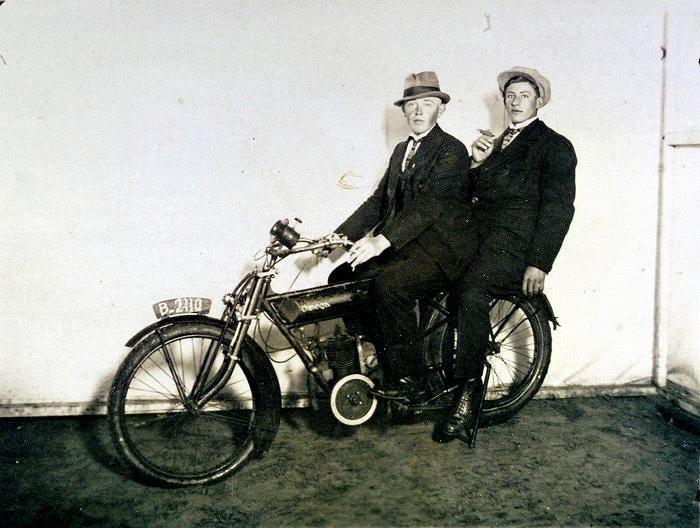
The second picture shows a proud young man on his bicycle. He was born in 1901, and looking at his face probably was 18-20 years old when the picture was taken. Later (probably from 1932) he owned his own motorcycle.
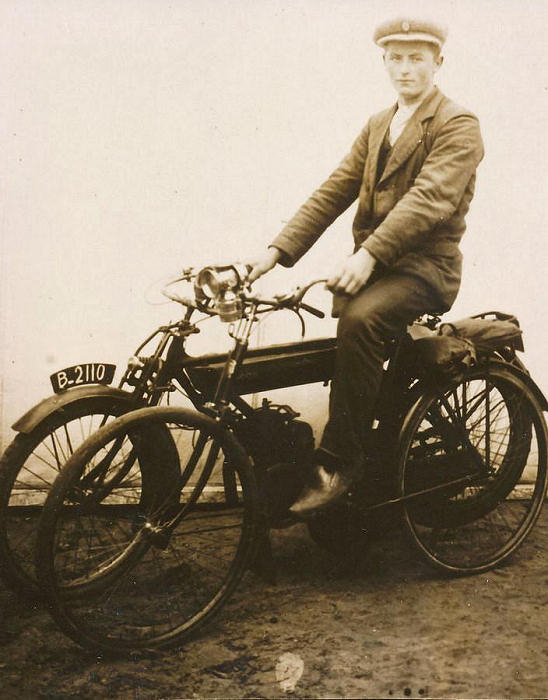
The man on the 3rd picture with the same motorcycle was born in 1890. As his age is difficult to estimate, it is still hard to determine the year this picture was made.
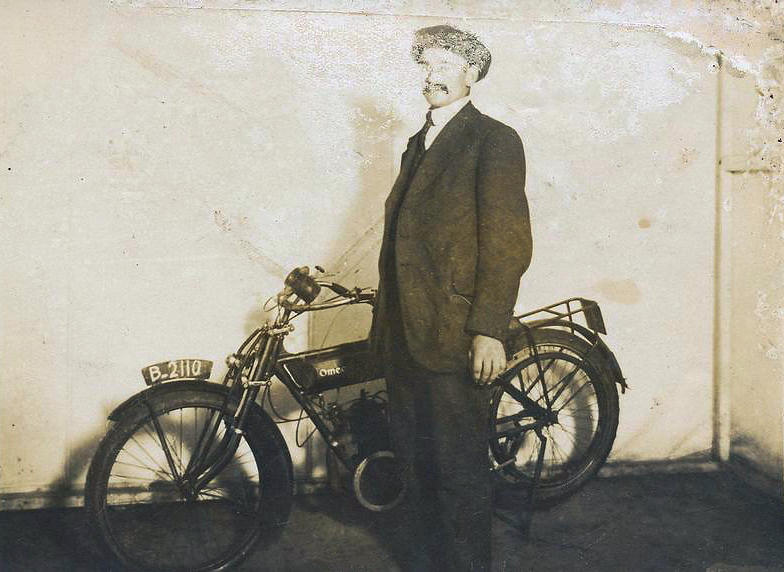
The next picture is dated 1922. The girls on the motorcycle were born in 1909 and 1917, so they must have been 13 and 5 years old on this picture.
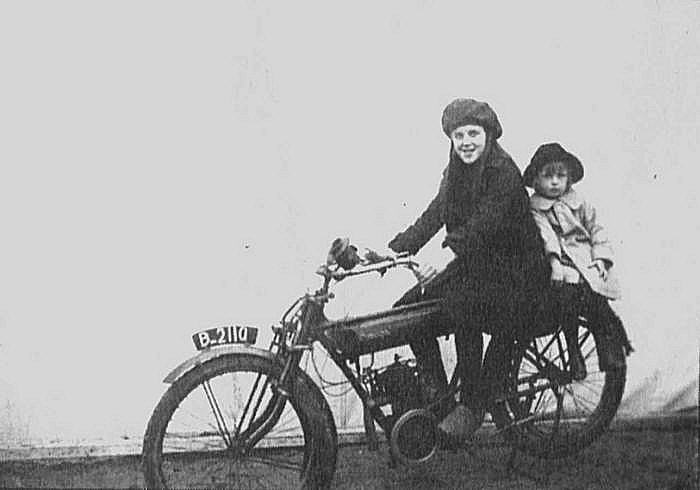
Another picture with 2 young girls on the Omega:
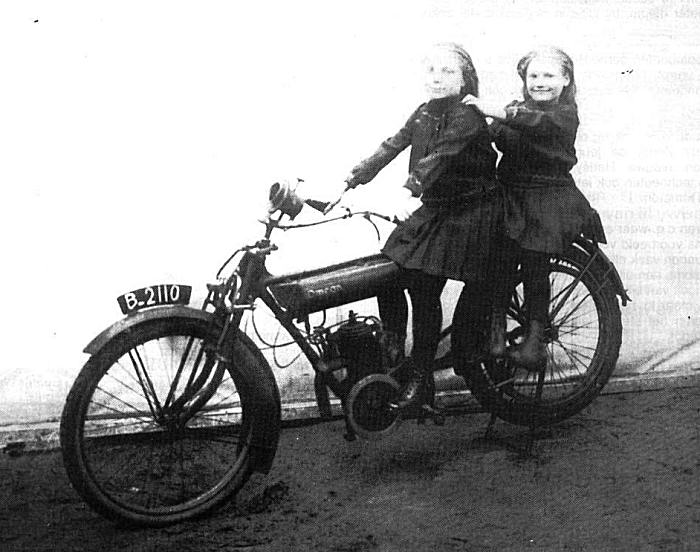
The young illustrate that the Omega was probably also used to make pictures on schools.
The next pictures do not show much of the motorcycle itself, but just therefore I thought it was worth to publish them here, as they illustrate that the motorcycle was just a less relevant detail of the picture:
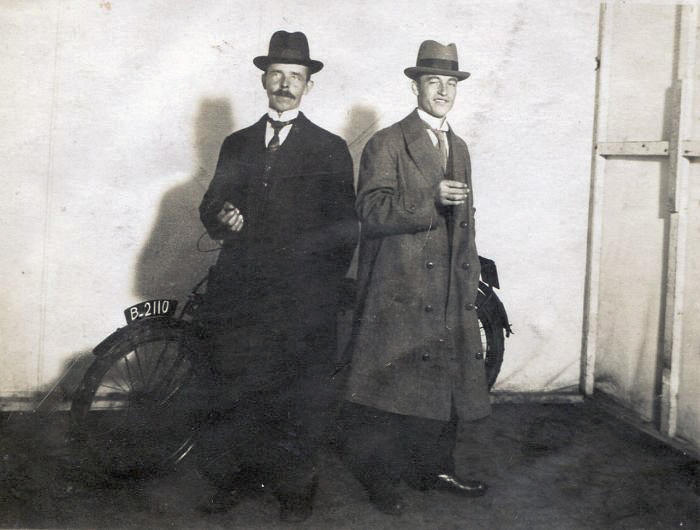
The larger the company, the less we see from the motorcycle. Here an example of a quite curious party of 6 people. Clear that they were not the riders of the bike....
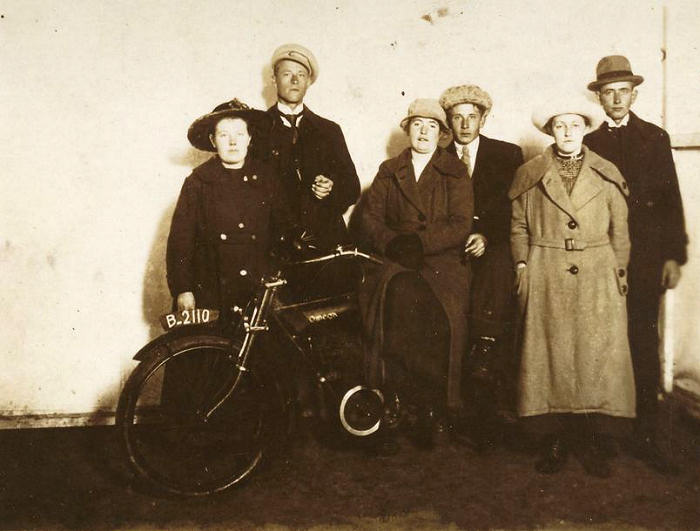
Here the poor motorcycle is quite heavily loaded. Note the stout look of some of the man:
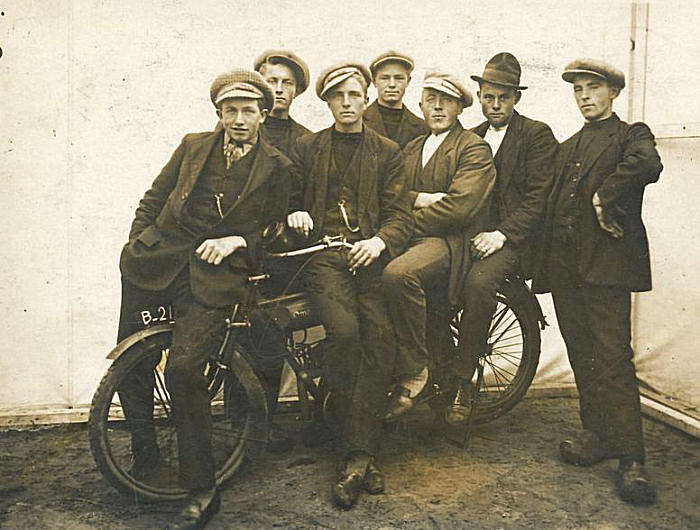
And finally a picture with a single young man seated on the motorcycle. Again his clothes are more suited for a party than for motorcycling.
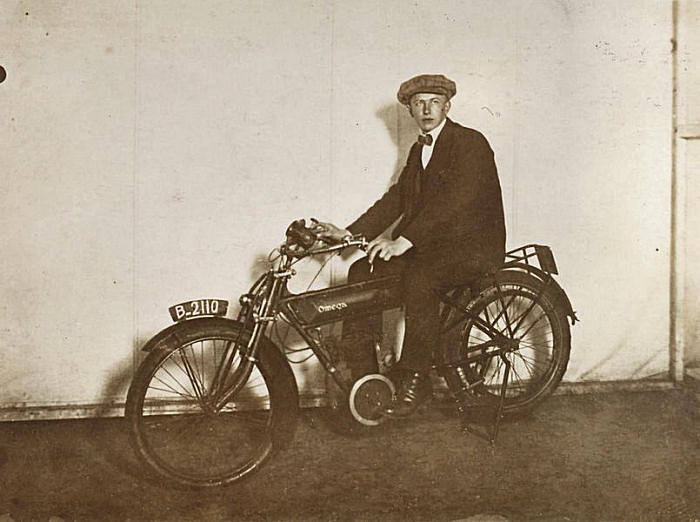
The next Omega pictures I got from Henk Mobron. On the motorcycle his grandparents, who lived in Noord Holland, also a province of the Netherlands. Henk knows that his grandparents travelled all the way to Austria on this motorcycle, and the only trouble they experienced was 1 flat tyre!
The motorcycle appears to be one from the period 1916-1919, as it has the Druid front forks (later Omega used Brampton Biflex, as seen in the advertisement from end 1919). The engine appears to be a 4-stroke, and the first 4-stroke Omega is from 1916. The machine has a gearbox, but not yet a kickstarter.
The Omega has been equipped with a lot of accesoires: a big acetylene headlight, with the gas generator mounted on the lower front frame tube, a big horn and probably also a manual sirene (vaguely visible behind the headlight). I don't know whether the large footboards were already standard delivery in those years.
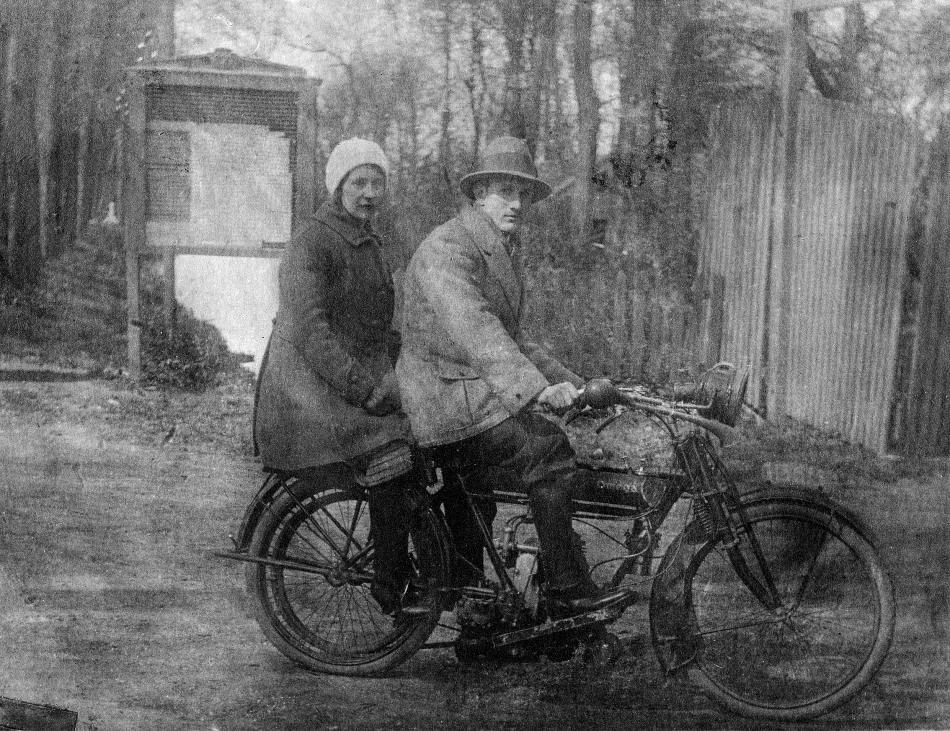
The next enlargement shows more details of the motorcycle:
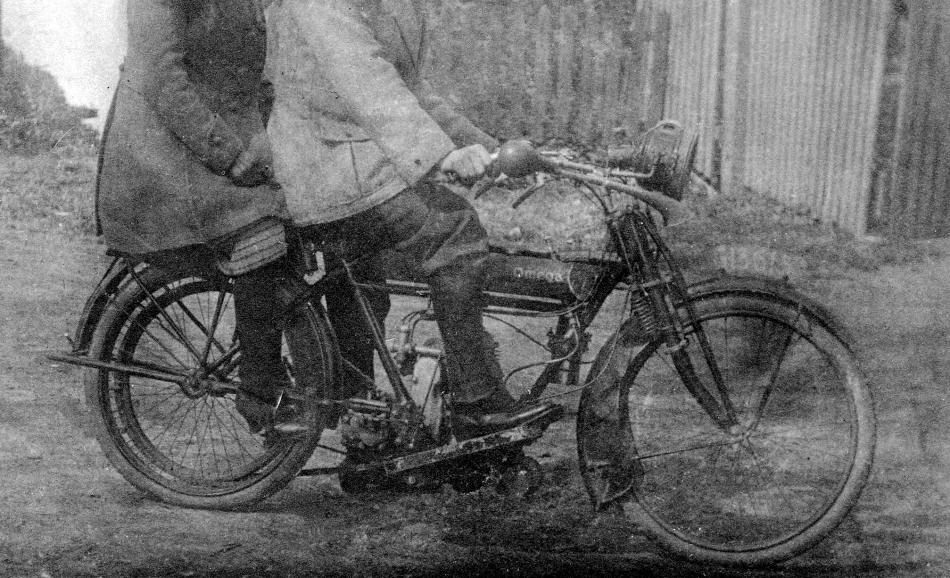
The next picture comes from Stephen Neale. It shows his grandfather Arthur Neale Badcock who lived in Leicestershire, England. Unfortunately there is no further info about the picture.
The Omega is most probably the Model B 'Sports Version' from 1920. It is not the model A 'Tourist Version', which had touring handlebars and footboards, and also not the model C 'with clutch and kickstarter' because the starter would have been visible behind the ankle of the driver. Almost the same model has been sold in 1921 as Model 3, but then it had Druid front forks instead of the Brampton Biflex on the picture.
The
motorcycle is equipped with a nice acetylene lighting set, including rear light, and a manual sirene on the upper frame tube.
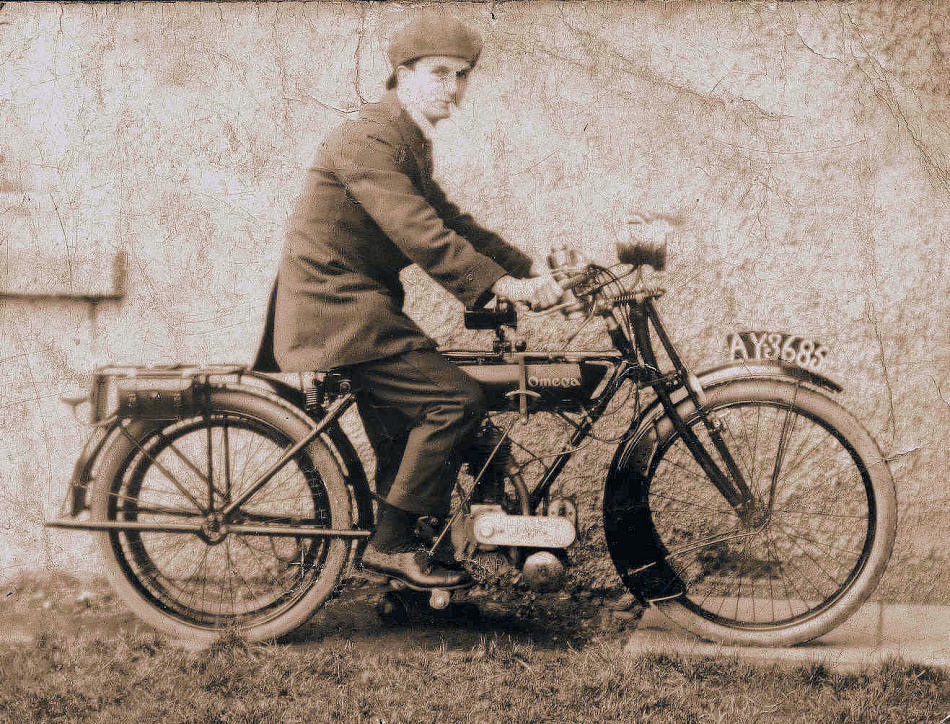
A comparable motorcycle is seen on the next picture, with special thanks to Stephen Wilson. The man on the motorcycle is his grandfather's brother Edwin Northing Wilson, better known as Teddy. The picture is probably from 1927, one year before he died in an accident with another motorcycle.
Nice detail of this picture is that his girlfriend was originally sitting on the back. As Teddy's mother didn't like the girl, she had her removed from the picture after Teddy's death. The contours of her can still be clearly seen.
The motorcycle on the picture has a JAP 4-stroke engine with the "chain cum belt" drive, a combination that has been used up to 1923. Most times the front forks give a good indication of the year of construction, but I could not really find this type in my documentation. I think this must be a 1921 Omega, but I am not 100% sure bout it.
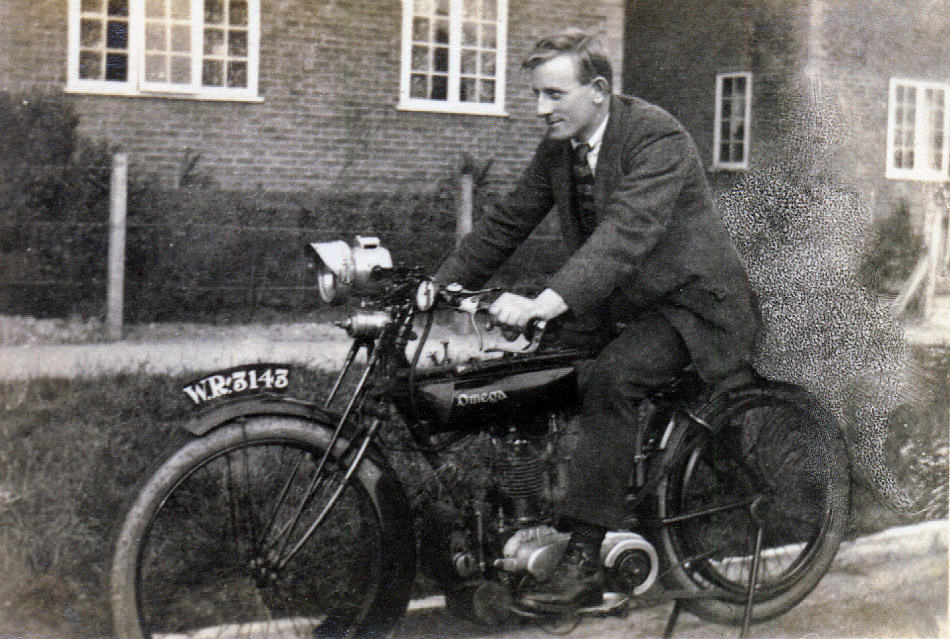
In November 2017 the Dutch Veteran Motorcycle Club (VMC) had an Omega in the club magazine as "picture of the month". This is a Dutch picture, the license number was registered in Boekel, Noord Brabant (south part of the country).
The motorcycle is most probably the Omega model 2 from 1925, equipped with a 350cc JAP side valve engine. The front forks arre the proprietary Omega forks with tension springs, inroduced in 1922. Here the part of the picture with the motorcycle:
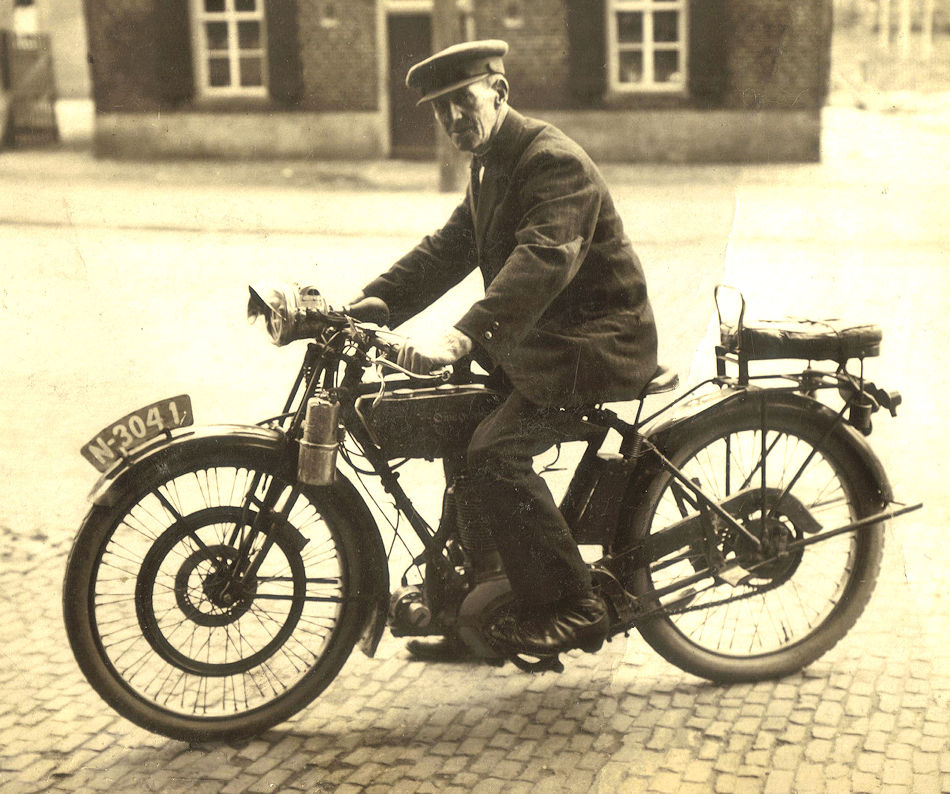
I made a translation of the original Dutch article, that also contains a scan of the complete Omega model line-up in 1925.
Click here to view it.
The following picture shows racing driver Norman Black on his racing Omega. As a successful motorcycle driver in the years 1920-1931 he participated in eight Manx TT's and many 6-day Trials, Speed Trials and Hill Climbs. In 1931 he switched to car racing, in which he also became successful.
He participated the Isle of Man TT in the period 1920-1928, but on Omega only in 2 years. In 1921 he finished 22nd on his Omega in the Junior TT, a race for motorcycles with an engine of maximum 350cc. In 1924 he rode the ultra-lightweigth TT on Omega, a race for motorcycles with maximum 175cc engines, but did not finish.
The lightest 4-stroke engines used by Omega were 293cc, thus not suited for the ultra leightweight class. From 1923 on Omega had the Junior, using a 170cc 2-stroke engine and thus suited for the ultra-leightweight race.
The motorcycle on the picture has a 4-stroke JAP engine. This means that it is probably Black's 1921 Omega. In that year Omega used the Druid front forks, but the machine on the picture has another type that appears much lighter. Probably the standard forks have been replaced to save weight.
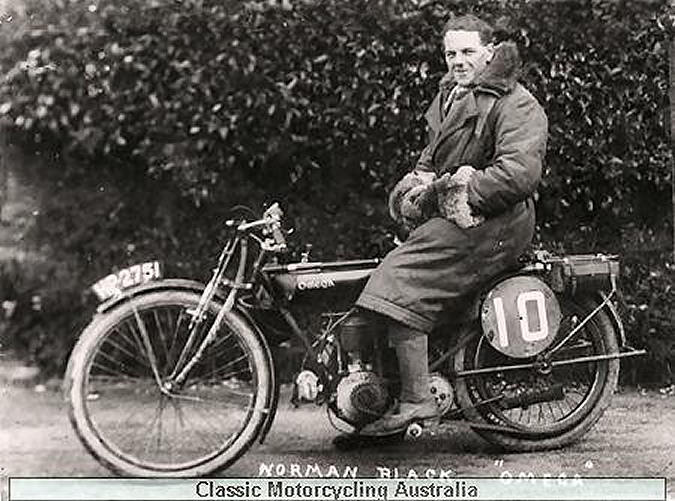
The last picture is dated November 19th 1931 and comes from Austria. The motorcycle should be an Omega, but this can not be seen on this rather speckeld picture. One indication can be the sides of the fuel tank, which appear to be painted in a different colour than black. Omega always had carmine tank sides.
What is clear from the picture is that the engine is the oil cooled Bradshaw engine. Omega has used this 350cc engine type only in 1925, so dating of the motorcycle is a piece of cake if it is really an Omega.
The motorcycle seems to have an electric headlight, which was certainly not a standard item in those years.
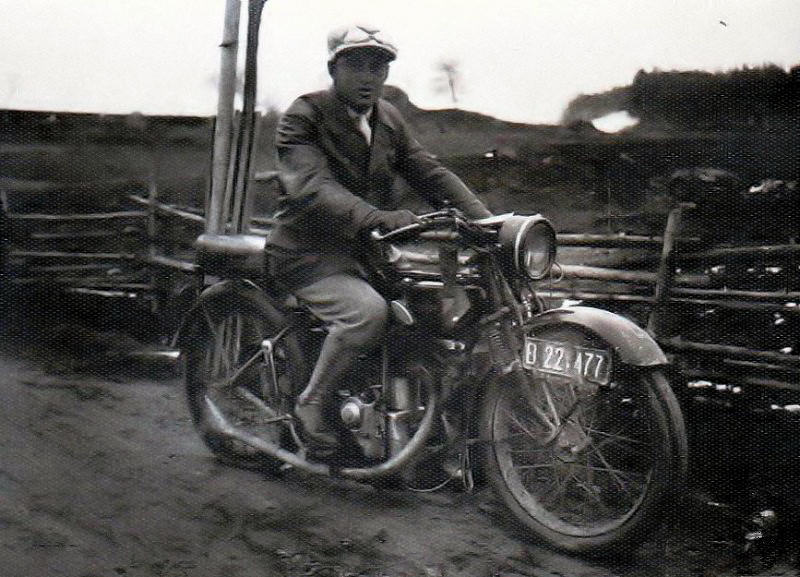
|

